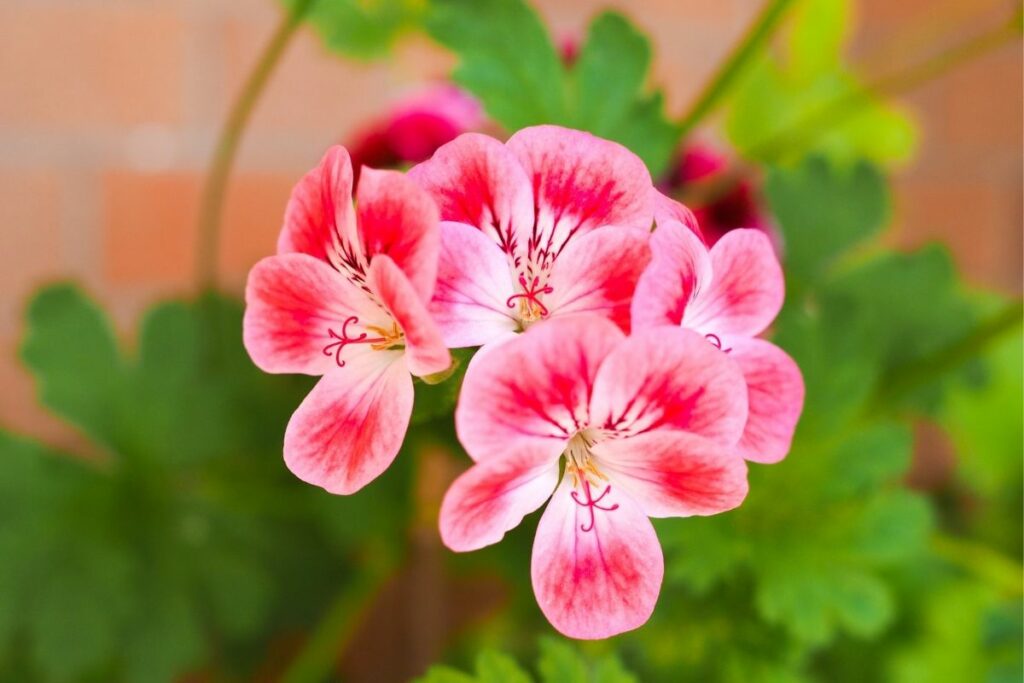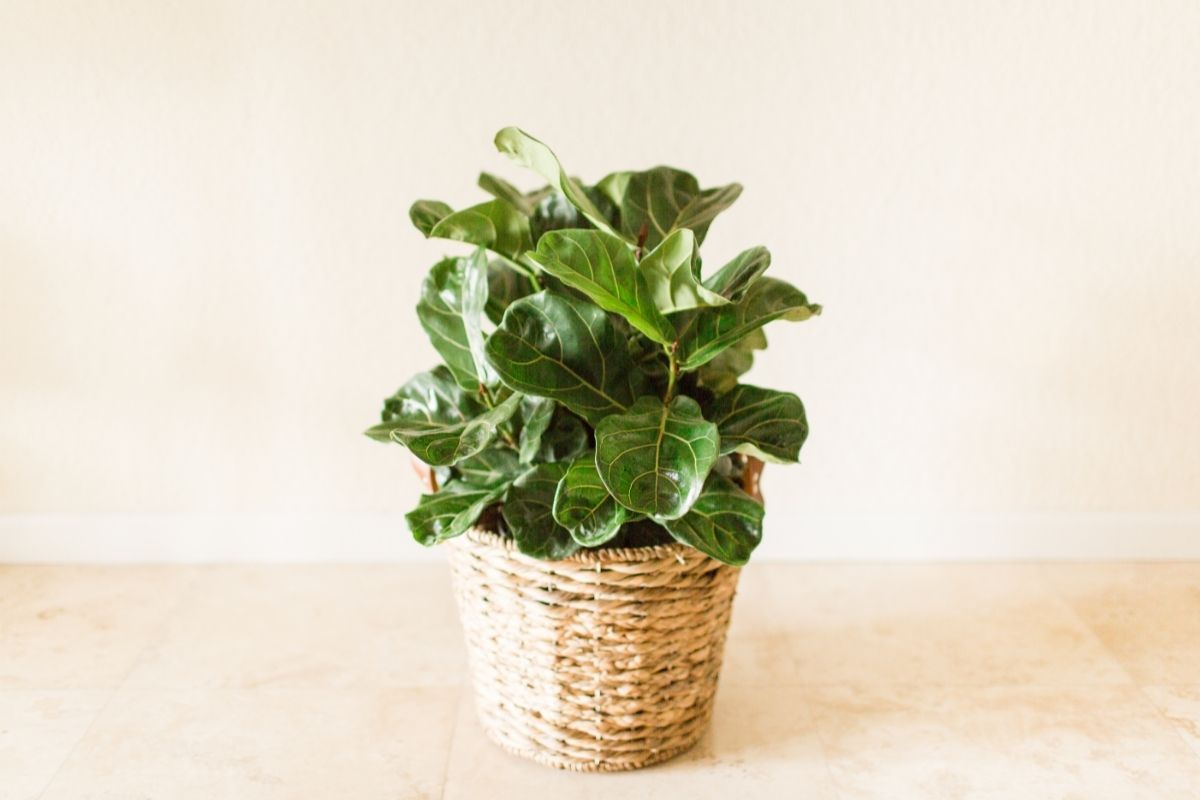Geraniums are beautiful flowers that come in a variety of vibrant colors. However, even though they are gorgeous additions to your garden, geraniums are also considered toxic plants to dogs.

The geranium plant has long been known to cause poisoning in dogs and also humans. In fact, it was once called the “poison flower” because of its high level of toxicity. This is due to the presence of oxalic acid, which is found in the leaves and stems of the plant.
In this article, we’ll take a look at how eating geraniums can affect your dog as well as ways you can prevent this from happening, and which plants are safe to add to your garden space.
What Are Geraniums?
The geranium flower is an annual plant with large green leaves and bright red or pink flowers. It has been used for centuries as a medicinal herb and even though it can be poisonous in large quantities, it is safe to use in small amounts.
Although there are many different types of geranium flowers, all of them share some common characteristics.
They are perennial herbs with large, showy blooms that are perfect for attracting butterflies and bees into your garden. All geraniums produce edible fruits and are considered a firm favorite with avid gardeners across the globe.
Oxalic acid is a natural substance that occurs in many poisonous plants and is one of the main components of the seeds and roots of the geranium plant.
When ingested, this toxic chemical causes vomiting, diarrhea, and abdominal pain in both people and animals. The symptoms usually appear within 30 minutes after ingestion and if not treated quickly, oxalic acid poisoning can lead to death.
How Does Oxalic Acid Affect Dogs?
Oxalic acid is a danger to pets and when ingested, it is released into the bloodstream where it begins to bind to calcium ions.
When this happens, the calcium ions become unable to function properly in the body. As a result, the dog may experience both mild symptoms or severe symptoms such as:
- Vomiting
- Diarrhea
- Loss of appetite
- Excessive Salivation
- Tremors
- Muscle Twitching
- Seizures
- Death
As oxalic acid is highly acidic, it will burn through your dog’s stomach lining, causing severe damage to its digestive system. It’s important to note that if you notice any of these symptoms, you need to act as quickly as you can.
What To Do If Your Dog Eats Geraniums?

If your dog eats any part of a geranium flower, you should immediately call your veterinarian so they can help administer an antidote.
If you do not know how to treat your pet for poison exposure, contact your local emergency room which will be able to provide you with more information.
Typically, there are two forms of treatment available for dogs who have eaten geranium flowers. One involves administering activated charcoal orally while the other requires intravenous fluids.
Both methods work equally well but the first option is recommended since it allows time for the antidote to begin working.
Veterinary advice should always be followed, and after assessing the situation and your dog’s symptoms, your vet will be able to decide on the best treatment for your pet.
What Garden Plants Are Dog-Friendly?
There are many other plants out there that aren’t dangerous to dogs. Here are just a few of our favorites that you can use in your garden:
- Rosemary – This herb is great for pets since it helps stimulate their appetite.
- Basil – This herb is another one that will help increase your pet’s appetite.
- Lavender – This herb is good for calming nervous animals.
- Sage – This herb is often added to animal diets to improve digestion.
- Thyme – This herb is a popular choice when it comes to adding flavor to food.
- Mint – This herb is very beneficial for digestive health.
- Marigolds – These flowers are quite pretty and although they can be mildly toxic, they are not considered dangerous.
- Chamomile – This popular culinary herb helps relieve stress and anxiety.
- Borage – This herb is great for attracting hummingbirds into the garden.
If you want to continue planting geraniums in your garden, you still can. However, you should always try and keep your pet out of the area where the geraniums are growing.
What Garden Plants Are Not Dog-Friendly?
If your pet loves to explore your garden, you want it to be as safe as possible so they can enjoy every inch of it. To make it as dog-friendly as possible, you should avoid adding the following to it:
- Chrysanthemum – If consumed, they can cause discomfort and loss of coordination for your dog.
- Carnation – These plants can cause mild gastrointestinal problems.
- Dahlia – As well as causing mild gastrointestinal, this plant can also cause dermatitis.
- Daisy – Certain species of this popular garden flower carry dangerous toxins that are harmful for your pet.
- Iris – If ingested, this plant will likely cause mild to moderate vomiting, drooling, lethargy, and diarrhea.
- Lily of the Valley – This plant has been known to cause vomiting, heart arrhythmias, seizures, and sadly even death.
- Peony – This garden favorite can cause vomiting, excessive drooling, and diarrhea.
Why Is My Dog Eating Garden Plants?
You might have noticed your dog tucking into your garden plants for a tasty treat and perhaps wondering if this behavior is normal. While eating leaves may be a dog’s primal instincts, it could also be a sign of an underlying health problem.
Even though leaves tend to be high in fiber, they aren’t nutritious and won’t affect your pet’s diet in any way. If your pet is eating garden plants and leaves a lot more than usual, it might be trying to get rid of something in its system.
It could also be because your pet likes the taste of your garden plants. That’s why it’s always important to check whether your favorite blooms can potentially poison your pet before planting them.
Final Thought
The geranium flower may be a beautiful addition to your garden space, but as this article shows, they are also highly poisonous to your dog and if ingested, could be potentially life-threatening.
If you have a curious dog that enjoys spending time in the garden and will happily take a bite out of anything that may look or smell delicious, you should definitely invest time researching plants that aren’t toxic to dogs.
That way, both you and your pet can fully enjoy your garden with you being able to relax in the knowledge that your pet is completely safe, even when nibbling on your plant paradise.
- Best Hanging Plant For Low Light - September 4, 2023
- Best Indoor Plants Florida - August 28, 2023
- Best Plants For Bathroom Smells - August 21, 2023








